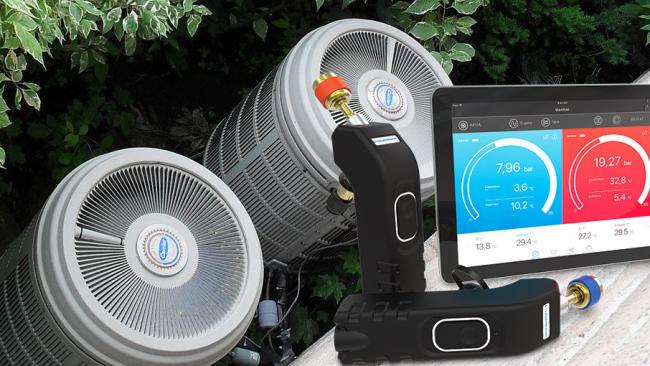Nature created mankind, but with the advancement of technology, man is now trying to recreate nature. This may have its own advantages and disadvantages, but nowhere is this struggle more evident than in the field of environmental control for our inhabited interior spaces.
The human body is dependent on external factors like the surrounding temperature: extremes of heat or cold cannot be easily accepted. In order to control the environmental temperature, men have tried and applied many inventions, and the heat pump is quite significant among them. In fact, the heat pump could be considered the heart of almost all HVAC applications.
Heat Pumps – In General
A heat pump is basically a device that carries the thermal energy from a source away to a sink. It is devised in such a way that it can work in both directions, i.e. it can make a hot region cool and make a cool region hot. The application of the heat pump is dependent on the area in which it is used.
The heat pump does not displace the thermal energy all by itself. This is carried out by a medium (mostly refrigerants) which is handled by the heat pump. Heat pumps usually find their application as whole-house heating and air conditioning systems. When switching from heating to cooling (and vice versa), the heat pump keeps its standard configuration. Only some of the internal components are switched to provide the varying results. The point to remember is that the heat pump is basically nothing but a heat exchanger, capable of exchanging thermal energy.
· What is a Heat Pump?
· Difference between Heat Pumps and Refrigerators
· Difference between a Heat Pump and an Air Conditioner
The operation of the heat pump and the other types of pumps available are bound to be a bit confusing. If you need a primer, the operation of other types of pumps are provided here for reference.
· PumpTypes and Operation
· Working Principle of a Hydraulic Pump
· Fluid Pumps – Classification and Types
· Positive Displacement Hydraulic Reciprocating Pumps
Every pump tends to have an efficiency, which is normally defined as the ratio between the work done by the pump compared to the energy supplied to the pump. The efficiency of the heat pump is termed the co-efficient of performance.
· Coefficient of Performance of Heat Pumps
Components of a Heat Pump
The four main components of a heat pump are the compressor, condenser, expansion valve, and evaporator.
Each component has its own importance and their strategic placement can used to build various applications like refrigerators, etc. (One interesting application of heat pump technology are the new hybrid heat pump/heating element water heaters entering the market. Please see the link in the next section for an informative article.)
Compressors act on the carrying medium (refrigerants) in order to change its pressure level, i.e. from low pressure to high pressure. The change in pressure helps in the absorption or the release of the thermal energy from the refrigerant.
The condenser re-condenses the refrigerant or the medium enabling it to release or absorb the thermal energy and return to a liquid state.
The expansion valve is the pressure reducing device. When high-pressure, medium-temperature refrigerant goes through the expansion valve, its pressure quickly reduces and the temperature drops. The refrigerant is then in a mixed liquid and gaseous state.
The evaporator is normally the sink where the thermal energy collected from the source, i.e. the condenser (in the case of a heat pump), is dumped.
· Various Components of the Heat Pump – Part 1
· Various Components of the Heat Pump – Part 2
· Various Components of the Heat Pump – Part 3
· Various Components of the Heat Pump – Part 4
Applications for Heat Pumps
There are many systems in which the heat pump tends to work as the heart of many different types of HVAC systems. For example, geothermal heating is one area. Geothermal heating utilizes the heat stored within the earth for heating the home in colder places. This is in a way a very effective and efficient way of conserving energy.
· Ground and Air-Source Heat Pump and How They Work in Home Heating
· Geothermal Energy for Domestic Floor Radiant Heating
· Recycling Heat – Stop Wasting Heat in your Home with a Heat Pump
· How a Hybrid Electric (Heat Pump) Water Heater Saves Energy
Apart from using heat pumps based on such natural resources as the heat in the air and the ground, there are other means of using heat pumps to do required work. One such application is the reversal of an air conditioning system to work as a heat pump for heating a home. The system thus reversed would be an interesting experiment that should surely work and provide a real know-how on how things work inside a heat pump system.
· Window Air Conditioner used as a Heat Pump


